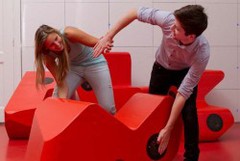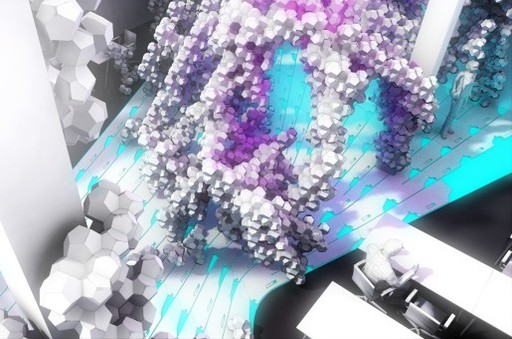-
-

- TouchSpace. Minor Interactive Environments, Hyperbody & ID-StudioLab, Fall Semester 2011 | Instructors: Ir. Chris Kievid, ir. Aadjan van der Helm, Dr. Walter Aprile
-
- MSc2
- Introduction
Students Wiki
Msc1 2016 Fall - RBSE
Msc2 2016 Spring - GSM
Msc1 2015 Fall - EX25
Msc2 2015 Spring - RE
Msc1 2014 Fall - m4h
Msc2 2014 Spring - I.P.E
Msc1 2013 Fall - 2628Climator
Msc3 2013 Fall - cECO
Msc2 2013 Spring - multiMOD
Msc1 2012 Fall - reNDSM
Msc2 2012 Spring - reRDM
Msc1 2011 Fall - vhPARK
-
-
MSc1&2 | 1:1 Interaction & Fabrication PrototypesMSc2 | 1:1 Fabrication
Hyperbody MSc2 is an advanced introduction to Non-Standard parametric design, digital fabrication, durability and collaboration. In this semester, students encounter the methodological implications of emerging design and fabrication technologies in the setting of a hands-on realisation of a design project at scale 1:1.
Architecture in our culture is fed by global resources and processes that transform building materials, energy, collaborators and information. This globalized production site is by no means spatially immediate. It is connected by networks of digital communication: any kind of digitized information can be accessed everywhere, immediately. In a situation where all digital information is at immediate reach; what matters for immediate adaptation of our material environment are transformations from the digital to the material realm and back. Only these transformations bind digital information to location.
Non-Standard Architecture is based on adaptive, informed digital-material transformational processes, which allow each building component to be individually made to measure. The complexity of non-standard building geometries can be handled efficiently and precisely due to digital design instruments, digital fabrication and tagging of building components. Tags are basis for numerical control of the building model, in parametric design, fabrication, assembly and interactive operation.
Tags can ensure an immediate linkage between a produced piece and its digital origin, providing informational context. With tags, all parts of a digital plan can be allocated in the physical environment. Digital model and physical environment can be matched one to one. The potential of such immediate allocation exceeds linear construction processes. It enables designers to track the life-cycle of each building component individually, and can help to establish a sustained population of building components. A population that can grow, mutate and evolve.

- protoCology. MSc2 & BSc6 Design Studio | Instructors: Ir. H.C. Friedrich, Ir. Chris Kievid | Students: Rene-Paul van Leeuwenm Michel Stienstra, Sander Apperlo, Gerben Knol, Igor Leffertstra, Marjolein Overtoom, Jasper Schaap, Jaimy Siebel, Wilson Wong, Frank Bunschot, Bao An Nguyen Phuoc
 Facebook/
Facebook/
 Twitter/
Twitter/
 RSS
RSS
